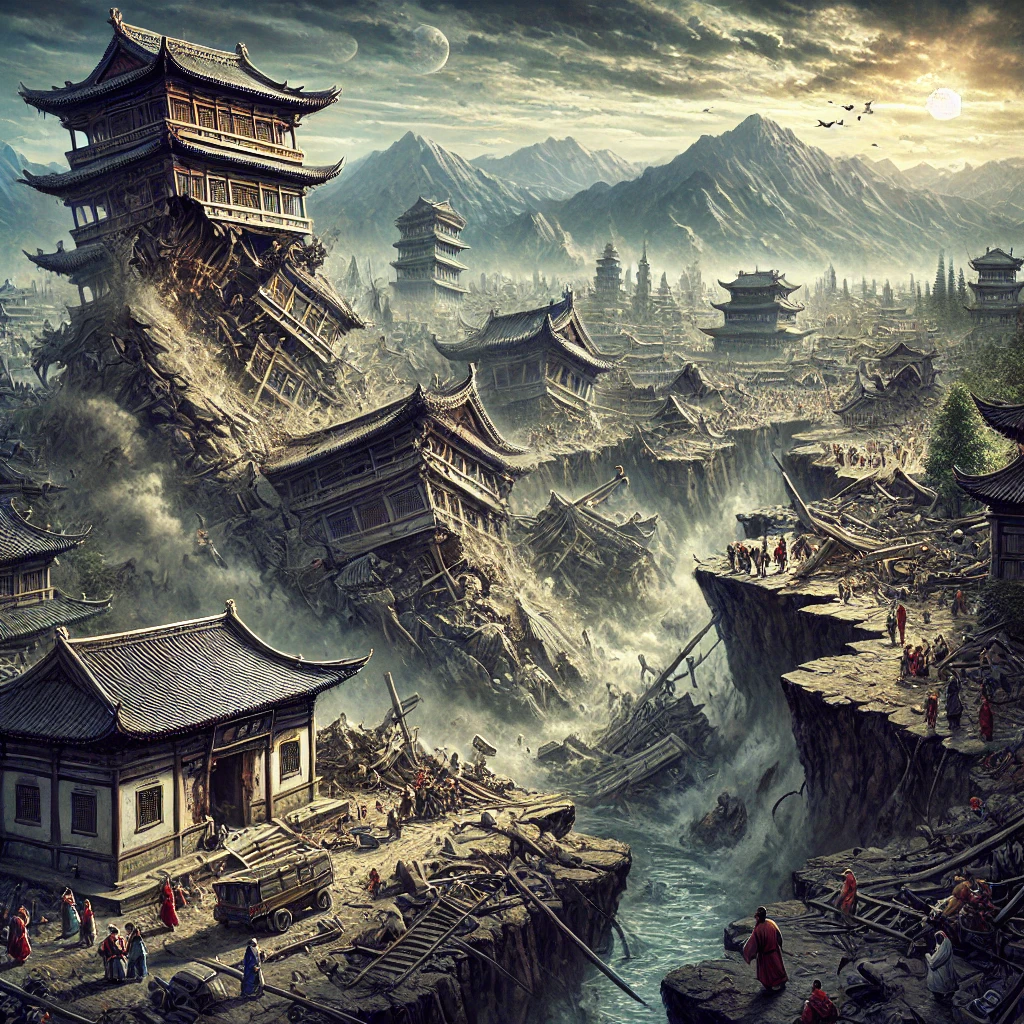The 1556 Shaanxi earthquake, also known as the Jiajing Earthquake, remains the deadliest earthquake in recorded history. This catastrophic event struck the Shaanxi Province in central China on January 23, 1556, during the Ming Dynasty. Estimated to have claimed the lives of 830,000 people, the disaster left lasting scars on the region’s landscape, culture, and population. Let’s explore the causes, impacts, and lessons of this monumental disaster.
The Event and Magnitude
The 1556 earthquake primarily impacted the Wei River Valley, a densely populated area known for its fertile lands and loess caves. Many of the region’s inhabitants lived in artificial caves carved into loess cliffs—a practice that had been common in China for centuries. However, the loess soil’s instability during an earthquake amplified the destruction, causing massive collapses and landslides.
While modern instruments did not exist to measure the earthquake’s magnitude accurately, seismologists estimate it to have been around 8.0 on the Richter scale. The devastation was immediate, with whole villages and towns razed to the ground in seconds.
The Human Toll and Immediate Aftermath
The scale of human loss was staggering. Historical records suggest that over 830,000 people perished, making it the deadliest earthquake known to humankind. Entire communities vanished, and survivors were left homeless and exposed to further risks, such as disease and starvation.
Geographical and Environmental Consequences
The earthquake transformed the region’s landscape. Large fissures opened, landslides blocked rivers, and soil liquefaction rendered farmlands unusable. These physical changes further isolated survivors, disrupted agriculture, and led to food shortages that exacerbated the already dire situation.
Cultural and Historical Impact
The Shaanxi earthquake not only reshaped the land but also left an indelible mark on Chinese culture and history. Literary records from the period describe the earth “roaring like thunder” and people likening it to a scene from an apocalyptic vision. The event also led to the emergence of stricter construction practices to improve safety in seismic regions, as architects and builders began to prioritize earthquake-resistant structures.
Lessons and Legacy
The 1556 Shaanxi earthquake taught future generations about the importance of understanding and respecting natural hazards. Today, seismologists study this event to better understand seismic activity in the region. In fact, Shaanxi continues to be an area of seismic interest due to its proximity to tectonic fault lines.
Conclusion
The 1556 Shaanxi earthquake remains a profound reminder of nature’s power and the importance of preparedness in the face of such dangers. Though centuries have passed, the earthquake’s legacy continues to inform modern seismology and structural engineering, helping to save lives in regions at risk.


San Andreas fault comes to mind. When is it next likely to become alive?